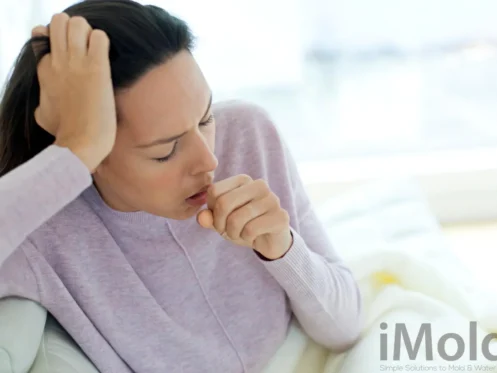Do you have mold in your home? Although you may not be able to see it, it could be living all over your home. Common spots are under your sink, shower curtains, roof, or where you have pipes. The tricky part is that it could live within your walls as well and may not be visible. After a bad storm or a hurricane, water damage can be very prevalent. It is crucial to get a mold test done if you have even the slightest thought that you may have mold in your home. Mold exposure can cause several health risks to you and your family. Allergenic, Pathogenic, and Toxigenic are the three types of mold. Depending on the type of mold in your home, you may experience different symptoms. Learning the type of mold and the different strands can give you insight into what could be in your home and what you could be experiencing.
Common Molds in Your Home
Some of the mold types that may be living in your home are:
Aspergillus: You can find this mold in warm and damp locations in your home. It produces a mycotoxin which can be detrimental to the lungs.
Penicillium: This is another common mold that you may find in your home. This tends to live on wallpaper, and/or insulation. If you are noticing horrible allergies or asthma-like symptoms, this could be the culprit.
Stachybotrys: Black mold is very toxic and can have extreme effects on one’s breathing. Black mold alone can cause issues to pretty much every aspect of your body and you should seek help immediately.
Health Issues from Mold Exposure
- Allergies: Allergies and asthma are one of the main symptoms of mold exposure. You may start to notice a runny nose, congestion, or watery eyes. Although this could seem like normal allergies, it could be coming from the mold as well.
- Circulatory Issues: This refers to when the toxic mold hits the bloodstream. The mold can be ingested or absorbed through several different avenues of the body. When toxins stick around in the bloodstream for a long period, you may experience heart damage or potential hemorrhaging.
- Infection: Infection can be very common from mold exposure. This may affect those who are already dealing with health issues and could make things a lot worse. Most infections take place in the lungs or other vital organs.
- Respiratory Problems: One may experience respiratory issues early on when exposed to mold. Mold grows in damp environments and this can affect breathing issues and increase asthmatic tendencies.
- Chronic Illness: When the immune system starts to weaken from the mold, there is the potential of acquiring a chronic illness. There is great inflammation that can occur and the body starts to have a long-term effect.
- Digestive Distress: Mold can have a very bad effect on your digestive system as well. Certain types of mold can cause an upset stomach and irregular bowel movements. This is not a symptom that people tend to associate with mold but it can happen.
- Skin Conditions: If exposed to black mold, you may start to see a pinkish/brown rash that comes back from time to time. There are several other conditions caused by actual mold or fungi on the body as well. A mold of any kind can have serious effects on all aspects of the body.
A few other signs and symptoms one may notice are:
Eye problems, metallic taste, excessive thirst, and major fatigue. If you are noticing one or more of these symptoms, seek medical attention.
What To Do Next
There are steps you should take with your home as well as with your health when mold is lurking in your space. The first thing is always to seek medical attention and get your health in check if you have serious symptoms. All the answers to your doctor’s questions stem from the mold test that you get in your home.
When you start to have symptoms or notice mold, make sure to call a professional to come and take a look at it. We will come to do a full mold inspection and discover if there is any mold in or around your home. Make sure that you get a full explanation of where the mold lives, what kind it is, and what kind of symptoms you and your family could expect. As you go to the doctor, the more information you have, the better. If you can, let your doctor know all the details of the mold as it may alter your treatment. As stated, there are several symptoms of mold exposure in and outside of our bodies. If you notice anything out of the ordinary with you or your family, look into it to see if mold could be the culprit! You can expect there to be serious changes made to your home that could take several weeks to resolve. The goal is to find all the mold that could be living there and causing you to be ill. Because it is not always visible, it takes time to do a full remediation and get you back to living a safe healthy life in your home.
For more questions on how mold remediation works and the full process, check out our website. You can also give our team a call to discuss any potential mold in your home!

